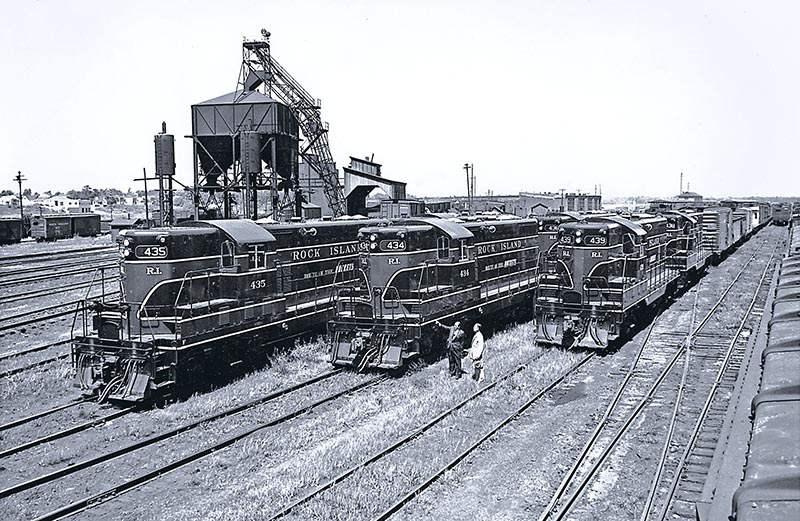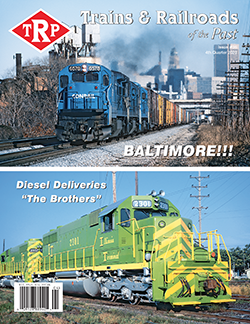There is something special about the delivery of brand new motive power to a railroad. In the case of new short lines, it’s often celebrated as a new start for a small group of enthusiastic railroaders. For fans of larger roads, it might mean the transition out of a favored class of motive power, like when Metra’s fleet of venerable Burlington Northern’s E9’s were replaced by newer commuter power. Ironically, around the same time in the same city, fans celebrated the arrival of new Santa Fe power in the form of red and silver Super Fleet diesels from both General Electric and nearby EMD. There’s an old saying that covers this… when God closes a door, he opens a window.
Regardless of the circumstance or sentiment, it’s a rather interesting event. Think of your local short line or regional — how often are they getting new power? And unless you live in a city with a major Class One diesel shop, you probably don’t get to see new power arriving fresh from the factory or another road until it’s been online for a while. It is interesting when you find locomotives being transported in trains, whether as part of the freight consist, dead behind the live power or even on a flatcar. In our modern era of cookie-cutter railroading, catching power in transit is something to break up the monotony of railcars loaded with graffiti., and we’ve included a few varied examples here for you to enjoy!
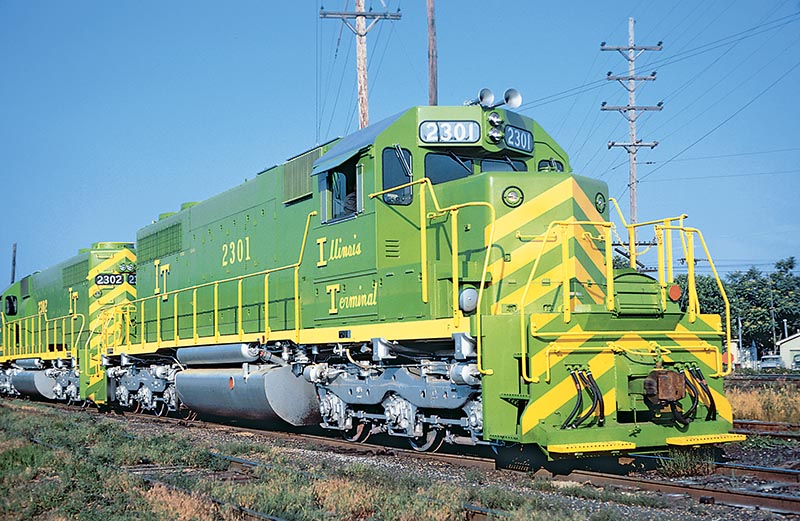
ABOVE: Before making their first revenue run, consecutively numbered Illinois Terminal SD39s 2301 and 2302 are the stars of the show, as seen at Springfield, Ill., on July 8, 1969. If you look carefully, this photo illustrates perfectly why the editor of this magazine was not often allowed to run the train. See that ridiculous bell placement above the “F” painted on the frame? I would have driven the crews nuts by scaring the living daylights out of them while they were standing on the steps or the pilot waiting to move. —Photo by Harold Cavanaugh, collection of Kevin EuDaly
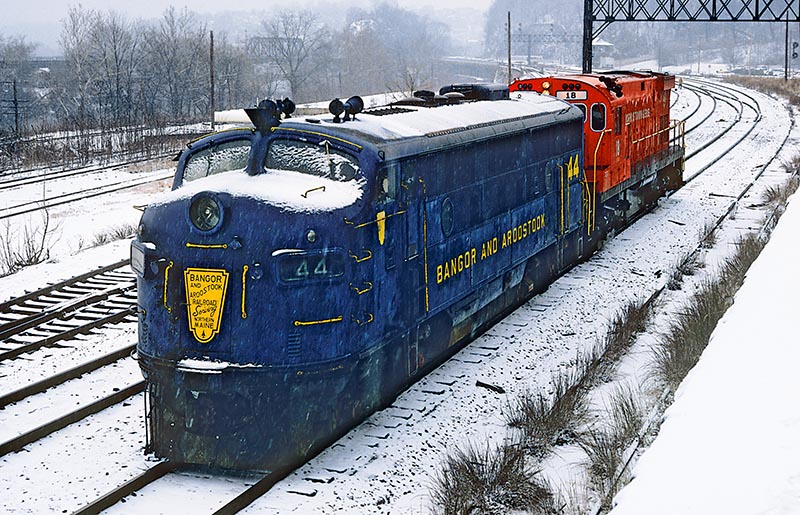
ABOVE: Without knowing the background story, this photo is very deceiving. First of all, these two diesels are on Conrail’s ex-Lehigh Valley main line in Easton, Pa. The red Alco towing the F-unit is Morristown & Erie C424 18. Bangor & Aroostook F3A 44 has been acquired by the Tri-State Railway Historical Society and has nearly completed its jour-ney from Maine to the M&E shop at Morristown. As far as I know, M&E never had trackage rights to Easton or any interchange connection in Pennsylvania, so I find it amazing that Conrail allowed them to dispatch their Alco to reel in that F3. The 44 was later beautifully restored as Central Railroad of New Jersey 57, joining the Anthracite Railway Historical Society’s F3A 56 and F3B “D” to create a stunning matched set of A-B-A tangerine and blue CNJ F-units. Today, the 44 wears classic DL&W colors and can be seen at Steamtown wearing the roadnumber 663. —Kodachrome courtesy of Bob’s Photo
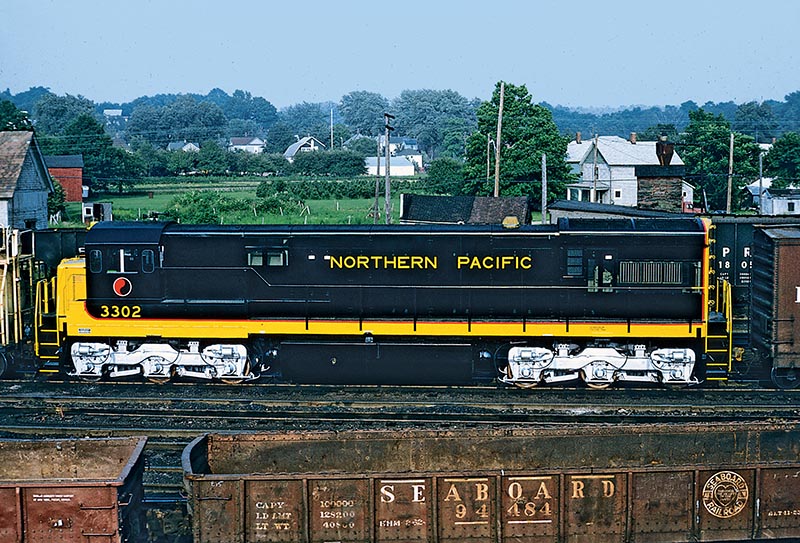
ABOVE: Before heading to the Pacific Northwest, Northern Pacific General Electric U33 3302 gets a tour of rural northwestern Pennsylvania in the consist of a Bessemer & Lake Erie freight. The shiny black and gold U-Boat is seen at Albion in July 1969, not far from its birthplace at Erie. Those colors fit right into the Steelers Country that it is traversing. Unlike some movements, where the delivering road gets the use of some additional horsepower, not to mention, a little free diesel, the stacks of the 3302 are securely capped, meaning that this is true tonnage for the B&LE. —Photo by E. Hirsimaki, from the collection of Kevin EuDaly


